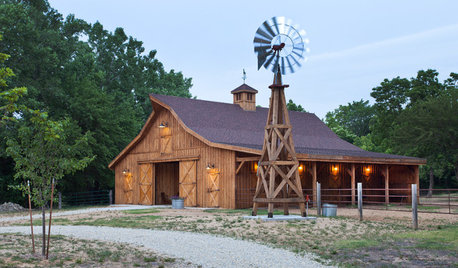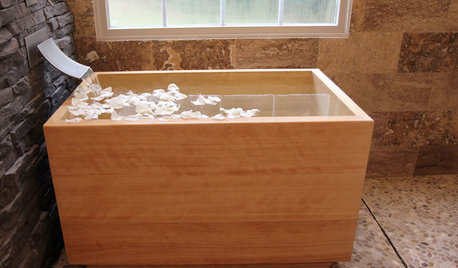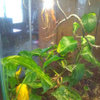Hello all.
I have read many threads with all sorts of fan or ventilation ideas which can get rather complex or too powerful.
So I have a few ideas that I wanted to see if anyone has tried or what their thoughts are, or hopefully, these may serve as new ideas.
Especially if terrariums are covered, air movement can be hindered. Often fans are installed to move air, but they can alter humididty greatly or dessicate parts of the terrarium. In order to overcome this I have thought of very low level air movement systems that primarily use water (as from a waterfall) to power them. These are ancient forms of powering used by our ancestors. I like them because if they could be engineered correctly, they might lower the amount of maintenance needed. I always like ecosystems to be as easy and natural as possible. This helps to make them more robust, less prone to failure, and easy to use for anyone. Notice how in movies that are in the trpocs the fans everywhere move very slowly. Fast moving air builds heat through friction and the motors also generate heat. There are perhaps many other reasons why this works well, but even if those fans are not optimal, they are pretty good and I bet they are cheap, easy to fix, and work well in much of the world where quality powerful fans might not work efficiently.
These systems might sit out in the open for you to see in the terrarium, or they might be a ble to hidden, partially or wholly. You may have parts of the system behind a log in your vivarium, or behind a waterfall, or behind the scene in many ways.
Many of these systems could work off the main water system of a terrarium which many systems could have. If you have a water feature then you could have a ventilation system. This would be great for orchidariums, paludariums, vivariums and other ...ums.
Different plants have different air movement and humididty needs, yet I think that plants need mostly to have the air circulated very near the leaves mostly. That means down at the atomic level. Plants are using C02 on the underside of the leaves. They are sucking some C02s in to their stromata pores and need others to replace them. Even a leaf moving .1mm would move trllions of atoms of C02 per square inch every second. That is to say, that even a little movement might be enough for many plants to transpire effectively. Of course other variables probably come into play here.
If the system moved slowly it would probably be safe for many pets as well.
1) WATERWHEEL: Here a small wheel is placed near the base of a waterfall that spins slowly around. The slats that move the water may be enough to move air, but one could also glue airfoils somewhere to increase air movement. For instance on the backside so it is not easily seen. Maybe there are plastic ones for aquariums or something that look OK (better than a fan)
2) WATERLEAF: Here you have something like a lever or a childs teeter totter with the axis near the middle, or 40% to one end that sits under the water. You might visualize a fly swatter shape, with the actual swatter shaped like a leaf and sitting in the middle of the aquarium. A pair of pincers or a piece of wire holds it in place, and the other end has a litle bucket that sits under the moving water, getting filled up, then moving down, which swings the leaf up. Then the water empties and the leaf moves back down. You have probably seen this in reference to watering systems from ancient Babylon! The leaf may just beat a few times a minute, but that might be ok.
3) BELLOWS SYSTEM: Here you might be able to build much of this system hidden from view. Perhaps behind the waterfall is a little plunger that gets filled with water. The increasing weight of the water pushes the plunger slowly down, where it eventually lets out the water. The plunger rapidly moves up. This energy could be harnessed in some way to move air out some nozzles, or to some other devise that would move a bunch of air. Imagine the bellows used to stoke a fire. If one side were fixed, and water pulled the other side down, then water left, and spring pushes bellows together. Or the bellows could suck fresh air in from outside the vivarium.
These are probably litterally thousands of variations on these themes, many of which where probably done somewhere somehow. Have any of you seen this?
Sometimes the easist solutions are the best. There are many people who want to sell us elaborate fan and ventilation systems, for varying levels of money. They often are not going to advocate simple solutions like this unless they make one and sell it themselves. My aquariums are all VERY simple and work great and most important, require little maintenance to look great. My fish guy taught me how to keep fish cheaply as he mostly makes money selling me fish, not hardware.

















ladybug_guam
sahoyaref
Related Professionals
Ballenger Creek Landscape Architects & Landscape Designers · Paramount Landscape Contractors · Pompano Beach Landscape Contractors · Soddy Daisy Landscape Contractors · Yukon Landscape Contractors · Ferguson Landscape Contractors · Daly City Fence Contractors · Lexington Fence Contractors · Rutherford Fence Contractors · Santa Clarita Fence Contractors · Aberdeen General Contractors · Anderson General Contractors · De Luz General Contractors · El Monte General Contractors · Plano General Contractorsgaryfla_gw
nathanhurst
sahoyaref
genomikOriginal Author
sahoyaref
gaiatechnician_yahoo_com
iliketerrariums